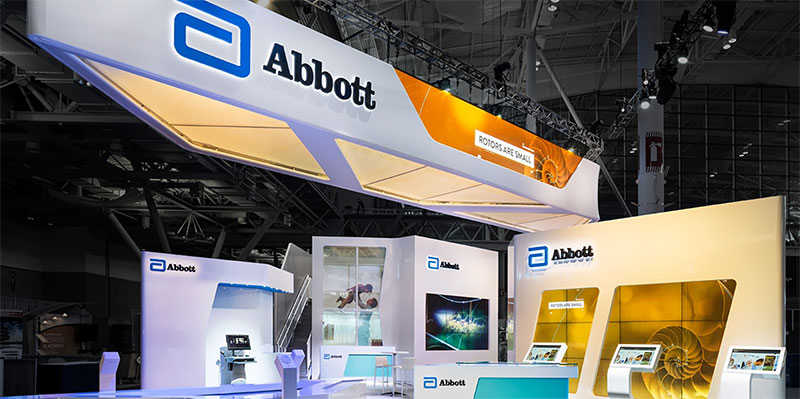If you’re putting on an event that runs year after year, then the chances are pretty good–your event solves a problem that really matters to your attendees.
But, what is it that makes attendees become loyal visitors? Part of it, of course, is putting on a quality event. However, the other key thing here is making sure your audience remembers your brand and stays engaged throughout the year.
In this article, we’ll examine some ways that you can keep attendees engaged so that they keep returning year after year.
Survey Your Attendees
Don’t be afraid to ask your customers for direct feedback about their event experience. Surveys give customers the chance to share what brands are doing right–and what they’re getting wrong, allowing them to make changes before customers turn on them and churn.
Your surveys shouldn’t take more than five minutes or so to complete and should include multiple-choice questions as opposed to open-ended comments whenever possible. For more info on increasing response rates, we recommend checking out this Cornell University study that digs into the topic.
Keep in mind your surveys must also go beyond merely asking a few questions. Instead, you’ll want to make a point of prioritizing questions based on event objectives. You might try something like this example template from SurveyMonkey–or get more specific based on your industry.
If you’re hosting a B2B conference, you’ll likely want to know which session tracks were most valuable to your attendees, as well as what topics they’d like to learn more about. Find out what was missing during your last event, then seek to fill that gap next time around. In the meantime, you might also create content around those topics past attendees deemed essential to demonstrate that you’re focused on providing the information your audience is looking for.
Additional insights like demographic info and personal preferences may also be gleaned from your surveys, which can then be used to help you fine-tune customer segments or personas.
Other survey considerations:
- Did you introduce a new concept during the last event? Find out what worked (or didn’t) and why.
- Poll attendees during events and directly after to learn more about the improvements they would find most valuable to future experiences.
- Gather feedback early in the marketing cycle to find out what past attendees would like to see most next time around.
Start Promoting Early
Look, even if you haven’t started the planning process for this year’s event, you don’t want to waste any time when it comes to marketing.
Starting as soon as possible, particularly for larger events, allows you to ensure that your audience remembers your brand and stays engaged with you throughout the entire year.
Start by creating the following, then working to drive engagement by promoting these pages on social media, through email, and so on.
- Create an event page ASAP. Even if you haven’t yet locked down a venue–or even a date, you’ll want to design and publish your event page early to ensure people can sign up as early as possible.
- Make an announcement on social media. Announce the event early to start building momentum. As soon as you have an event page up, you can start directing online traffic to that page. You might use content from past events to promote this next one, too.
- Write down your event “mission.” Why are you putting this event on in the first place? What are your goals? What knowledge do you hope to pass on to your audience? And, most importantly, what will attendees get out of this experience? Make it personal, not another piece of sales collateral. You might try writing it like a blog post, used to pass on your ideas, goals, and generate interest among past attendees and new audiences alike.
- Reach out to partners early. Event marketing partnerships are crucial for connecting with audiences both old and new. Potential collaborators include influencers, sponsors, complementary brands, vendors, and media partners. Reaching out early means you’ll have access to a wider audience by working with partners invested in spreading the word.
Additionally, it’s worth mentioning that there’s no such thing as “too early” when it comes to event marketing.
Often, event organizers wait until after an event is over to tell attendees they’ll be coming back next year. This means they miss out on the chance to reach existing attendees while they have their attention.
Partner Up on Promotional Offers
Another idea is to lean on your sponsors, vendors, and influencer partners to drum up pre-registration excitement. Think online VIP offers targeted to past attendees. This could be anything from partner-sponsored discounts, invites to exclusive networking events or wine-tastings, or a bundled deal.
A few things to think about before giving your partners free reign on your marketing channels:
- Make sure you do enough audience research before launching a campaign. Content and related offers should be both relevant and compelling to your target audience.
- Map promotional offers to various touchpoints during the marketing cycle. You’ll want to get strategic about when and where you promote partner offers. Consider which channels your audience spends the most time on, as well as how the partner offers work to increase the ROI of the event.
- Work closely with your partners to ensure that your campaign aligns with your event goals, your overarching business objectives, and their business objectives.
- Keep in mind that you’ll still want to curate the offers you choose to promote to your past guests, making sure they’re on-brand and in-line with what your audience is looking for. Otherwise, you risk alienating or frustrating your audience–which, of course, may lead to higher churn rates.
Host Smaller Events Throughout the Year
We’ve mentioned it before, audiences today crave more in-person experiences. Why not capitalize on that by hosting more events throughout the year?
According to research from the event software company Bizzabo, 91% of “overperforming” companies say that live events are an important element of their organization’s success.
While yes, even putting on a handful of “bite-sized” events is a lot of work, if you can pull it off, using your marketing budget on smaller live events like Q&As, networking mixers, and shorter one-off sessions might offer more bang for your buck than focusing all of your efforts on digital-only campaigns.
For one, your brand stays top of mind for audiences throughout the year, in a way that goes beyond promoting the “big one” with the usual cycle of early bird deals and speaker announcements, and so on.
Smaller events function as a secondary revenue stream, and when executed well, can function as a way to nurture the relationship with a community of “regulars.”
Ramp Up Your Investment in Content
Repeat events typically exist because there’s an ongoing need to address an industry-wide pain point. According to a 2016 survey, one of the key factors in retaining attendees is providing educational opportunities.
This means you’ll want to make sure that you develop a strong content strategy where you’re publishing great content all year that positions your brand as a thought leader/subject matter expert. Post case studies and original research, partner up with other industry leaders to create videos and podcasts, publish long-form blog posts, the list goes on.
In the time leading up to the big event, it’s also a good idea to invest in a photographer or videographer that can help you create event-specific promotional content, as well as on-site document activity for use in later marketing materials.
Capture video testimonials, record panels, sessions, and presentations while on-site, and release them throughout the year on your social media channels, website, and more.
Not only are these assets valuable to those folks who missed the event, but they’re also a great way for past attendees to remember what they’ve learned and implement those lessons they found valuable.
Wrapping Up
Stay on top of the latest trends in your industry and make sure you refresh your content each time you run the event—you want to make sure you continue to provide something new and valuable.





